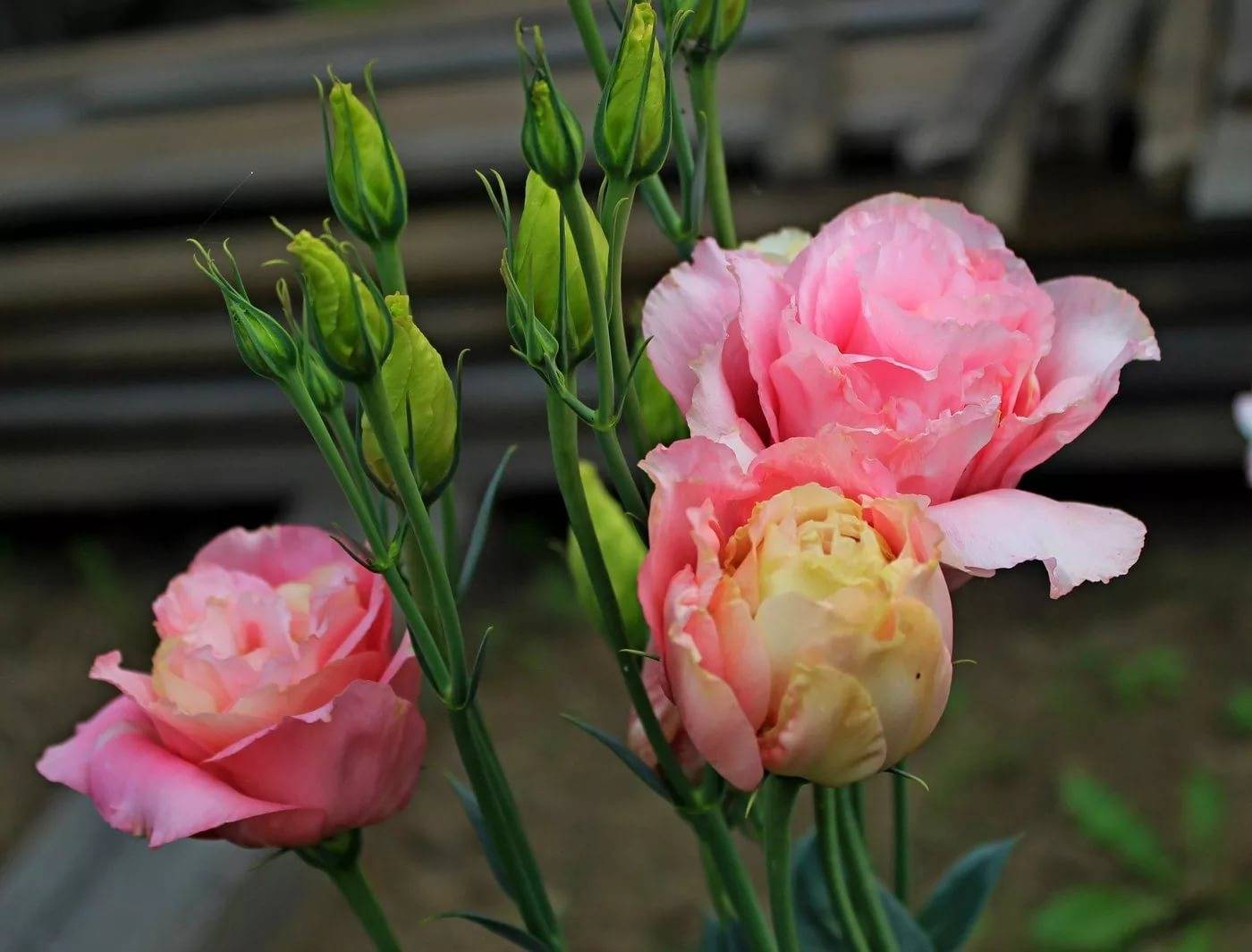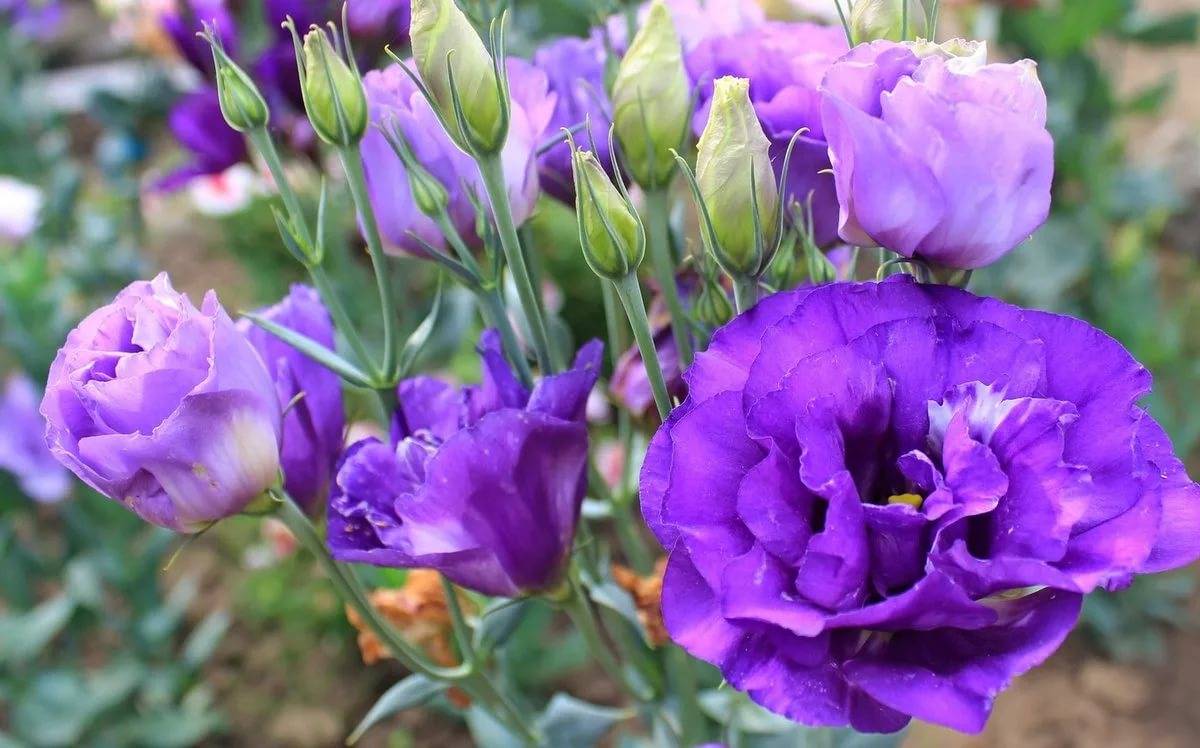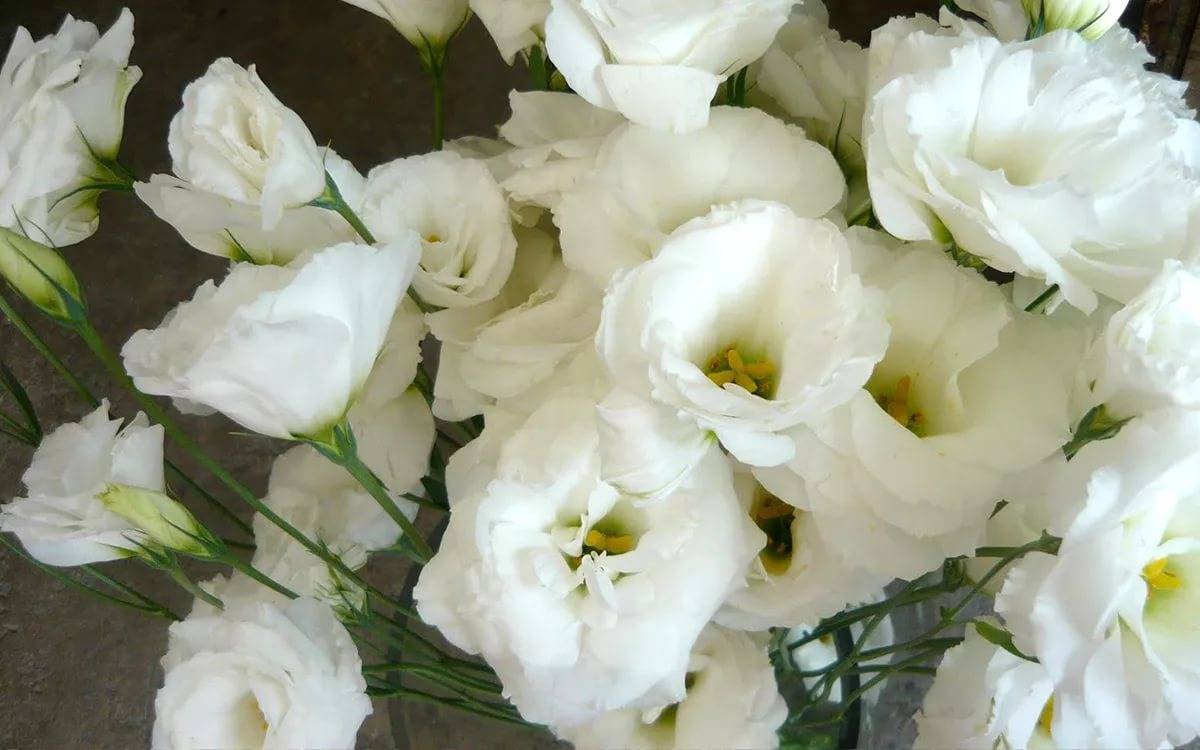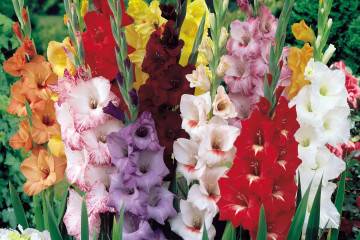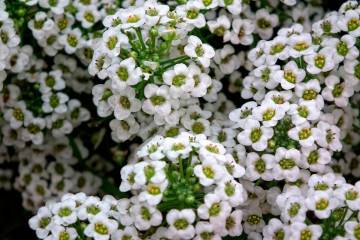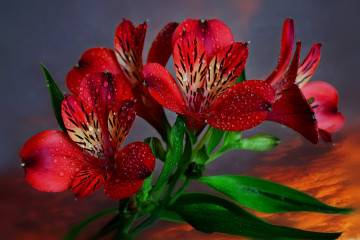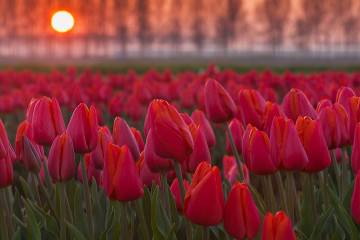Flowers are like roses, but not roses - as they are called
Content:
The rose is not only the queen of the flower garden, but also a very moody plant. You need to carefully look after it, feed it with certain types of fertilizers in a timely manner, cut it, cover it from frost and do everything that novice gardeners do not like so much. Fortunately, roses have a good substitute in the form of flowers, similar to them, but not so capricious. It is described below if there are flowers that look like roses, but not roses, what they are called and how they can be distinguished.
Shrub flowers like roses, but not roses: what are they called
Outwardly, plants such as have a lot in common with perennial roses:
- ranunculus;
- some varieties of peonies;
- eustoma;
- terry balsam;
- lisianthus;
- stone rose (rejuvenated).
The listed flowers, similar to a rose, prefer open ground. Of indoor flowers, hibiscus, gardenia, begonia and pelargonium are very similar to roses. Certain types of geraniums also have a lot in common with roses.
Lisianthus, or Irish rose - a flower that looks like a rose, but without thorns
Lisianthus is a flower called the Irish or Japanese rose. Other names are sometimes found: bitter flower and Texas bell. This plant belongs to the Gentian family. Lisianthus is native to Mexico, but the flower also grows in certain regions of North America and on the islands belonging to the Caribbean basin. The plant got to Europe thanks to the Irishman P. Brown, hence, the name Irish rose is obvious.
The plant prefers a warm climate. It is grown mainly for cutting, since it can stand in water for up to 20 days in a row without losing its attractive appearance. Lisianthus flowers are also grown as a houseplant. Outwardly, it is very similar to a rose, but has no thorns. The flowers are white, pink, lilac and even yellowish. Funnel-shaped, large flowers reach 8 cm in diameter, can be normal or velvety. The leaves are green, long, slightly curled with a hook.
Note! The stems are strong, stretching to a height of 0.85-0.90 m. At least 10-15 flowers grow on each stem, which is why each branch is quite suitable as a full-fledged bouquet.
The resemblance to roses is manifested in a half-open state. As soon as the flowers finally open, the lisianthus begins to look more like a poppy than a rose. All flowers do not open at the same time.
For your information! According to the description, Lisianthus is most similar to a rose. It is one of the ten most popular cut flowers.
Lisianthus and eustoma: what is the difference
Lisianthus has another name. It is also called eustoma, so there is no need to talk about the difference between plants. This is the same flower. The name eustoma is more often used in the scientific community. The meaning of the name of the eustoma flower is “beautiful lips”. Sometimes this name is associated with the fact that the flower in the Victorian era was used to emphasize someone's charisma and charm.
Growing lisianthus
Lisianthus loves warmth. It can be grown outdoors and on a windowsill. It grows well in frequently ventilated rooms on windowsills open to sunlight, while preferring diffused light rather than direct sunlight. Lack of light negatively affects the appearance (faded leaves and flowers, lethargy).
Note! If the summer is hot, and at home the pot is on the south window, then it is shaded. If direct sunlight hits the leaves, burns occur on them.
In summer, plants are taken out to open terraces, balconies, and transplanted into the garden. Lisianthus does well in a greenhouse or greenhouse. In spring and summer, the air temperature should not exceed 25 ° С, in autumn and winter, the plant has a dormant time, therefore it is able to withstand a decrease in air to 12-15 ° С. It is simple to take care of the plant, the scheme is the same as when caring for other garden plants, in a timely manner:
- water. Pour with settled warm water directly into the pot, drain the excess water from the pan. Otherwise, the substrate will acidify, and this will lead to decay of the root system and the development of fungal diseases. In the summer they water as the upper soil layer dries up; in the cold season, the number of waterings is reduced to 1-2 per month;
- feed. For the development of a flower, phosphorus and potassium are needed. Before the buds are formed, potash is added to the soil. In the phase of active growth (spring), the flowers are fed every week using mineral fertilizers. After the end of flowering, the plants are not fed, giving them the opportunity to rest and maintain strength.
It is important to choose high-quality soil. Plants prefer desalinated soil and remoteness from groundwater, therefore, before planting in open ground, it is preliminarily well drained. When planting in a pot, a mixture for flowering plants is used, consisting of compost, turf and leafy soil, mixed with peat and sand. The flower is grown in wide containers. Expanded clay and perlite are used as drainage.
Important! It is grown exclusively from seeds under a film until the first shoots appear (this usually happens 10-15 days after planting). They are planted in open ground after the threat of spring frosts disappears.
In the first year, plants planted directly in open ground (after sowing the seeds) do not bloom, buds appear only in the second year. But flowers planted in pots grow like annuals and bloom in summer.
Rose-like flower, ranunculus
Ranunculus is called a garden buttercup. His homeland is Asia Minor. Grows wild in swamps. Very similar to the Excalibur rose, but considered less pompous and modest. Modern gardeners have bred over 600 species of buttercup. It is less picky about storage conditions after cutting; in a vase in plain water it costs at least 10-12 days.
Ranunculus has a long flowering period (2-3 weeks) and a variety of colors. There are white, light pink, hot pink, red, yellowish and even purple garden buttercups. They bloom from early May to late August. Before and during flowering, the plant needs feeding with vermicompost. It prefers to grow in partial shade, but it will not get anything from direct sunlight. It is unpretentious in leaving. Water as the soil dries out. It grows mainly in open ground, in greenhouses and greenhouses.
The stem of the plant is low, no more than 0.25 m. The buds are medium-sized - 7-8 cm in diameter. Grown from tubers and seeds. Before the full opening of the bud, it is outwardly identical to the rose, but after opening it looks more like a poppy with double petals. The plant is very delicate, blends well with other flowers. Bridal bouquets are often made from ranunculus.
Note! There are two main types of ranunculus: the one that looks like a rose is called Persian, and the one that looks like a peony is called African.
The plant prefers fertile light soil types, neutral. It is best to plant it in a mixture where peat, black soil and humus are present. If the soil is acidic, then it is mixed with lime or chalk. Water during irrigation should not stagnate, therefore, the soil is drained before planting. Compost is added to the soil, disinfected with foundation. It is easy and simple to take care of afterwards:
- they are fed once every 2 weeks (with organic and potash fertilizers, alternating them. 40-50 g of fertilizer per 1 m² is enough);
- watered regularly, but not too often, since mold may appear on the leaves, and the tubers may rot (if this happens, the lower leaves are cut off, the amount of water is reduced, it is advisable to loosen the soil after each watering, removing weeds);
- the faded buds are cut off (if this is not done, then a new ovary and buds will not appear);
- before planting, the land and neighboring plants are treated with insecticides (ranunculus should be wary of aphids and thrips);
- in the fall, after the leaves turn yellow, the tubers are dug up and placed in storage (before that they are kept for 3 days in a solution of foundationol, after which they are dried).
If the winter air temperature does not drop below -7 ° C, then the tubers are left in the ground, covering the plant with spruce paws or old clothes.
If you plan to grow a plant in a pot, then a wide container is selected, and the tubers are placed in water for a day before planting. Eggshells are used as drainage (you first need to beat it off with a hammer to grind it), expanded clay or small crushed stone. At the bottom of the pot, there must be holes for the excess water to drain.
The tubers are planted, covered with soil, watered and the pot is taken to a room where the air temperature will not be higher than 12 ° C. As soon as the sprouts reach a height of 5-6 cm, the flowerpot is transferred to a warmer room with a temperature of up to 20 ° C. As soon as the flower begins to form buds, the air temperature in the room is lowered to 18 ° C, trying to provide the flower with maximum access to light. If this is not done, then the flowering will end quickly.
Each year, the ranunculus will have to be transplanted into fresh soil. Otherwise, there will be no flowering next year, or it will not be so lush. Tubers are stored at a temperature not lower than 15 ° C.
Herbaceous or herbal rose
Eustoma, or herbal rose, comes in several varieties. The most popular among gardeners are those that have a greater resemblance to a rose, since they are in demand among buyers, florists, decorators, and landscape designers.
- Russell's lisanthus large-flowered. On straight tall peduncles, rather large delicate flowers of a lilac or light yellow hue. There is a waxy coating on the leaves. After full blooming, the flower resembles a poppy, but at an early stage of flowering it is almost indistinguishable from a rose.
- Matador mix. A low-growing plant up to 25 cm high. Flowers are small, up to 6 cm in diameter, double. The variety was developed in Japan. Suitable for open field and potted lisianthus. It looks gorgeous in bouquets. Some varieties, for example, White, have buds that are completely identical to roses. The shade of the buds is different: white, light blue, lilac, pink.
- Aurora. Early flowering tall plant (0.9-1.2 m). Grown for making bouquets. The buds are large, 8 cm, no less. The shades are the most unusual: red, white and blue. There are even two-color buds.
- Echo. On spreading straight stems up to 0.7 m high, there are many large buds. The variety blooms early, the buds open gradually. There are over 11 shades, including mixed ones.
- Florida pink. Grown in room conditions. The stem reaches a height of 0.9 m, the flowers are large and bright. At least 15 shades are known, so everyone can find a plant to their liking.
- Mermaid. This herbal rose variety is short (no more than 15 cm in height). Branched shoots, at least 5 buds appear on each of them. The flowers are purple, white, blue, pink.
- Fidelity. A small bush (up to 20 cm) is strewn with snow-white flowers. This white lisianthus variety is ideal for bouquets. Can be grown outdoors and in a pot.
Regardless of the variety, the herbaceous rose is most often propagated by seed. But sometimes root propagation is also practiced. Here it should be borne in mind that the roots of the plant are very delicate, they are easy to damage.With the slightest cracks in the roots, it will not work to grow a healthy plant. Reproduction by cuttings is also not practiced precisely because of the fragility of the root system.
Important! The roots of the herbal rose are similar to the roots of phlox and host, which is why some unscrupulous sellers sell these plants under the guise of eustoma.
Plants easily attack fungi and pests. Periodically, adult plants and sprouts are sprayed with insecticides (ridomil gold, zircon). Very young specimens are not sprayed, the first procedure is carried out after at least 4 leaves appear on the stem.
Thus, it is easier to grow rose-like flowers than the roses themselves. They decorate not only the garden area, but also the room, since most of the listed plants feel great in pots. The main thing is to know the name, to familiarize yourself with the description and characteristics of the cultivation.
